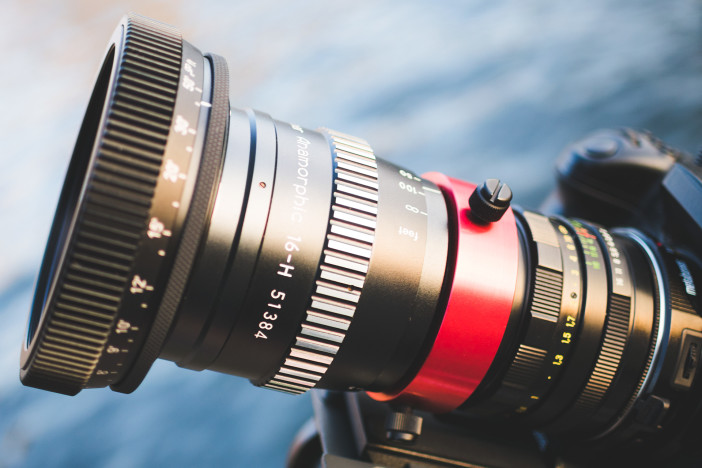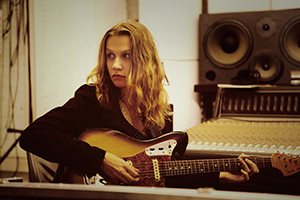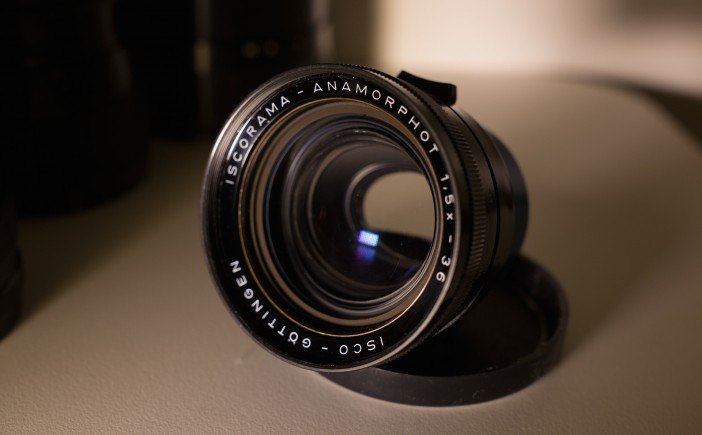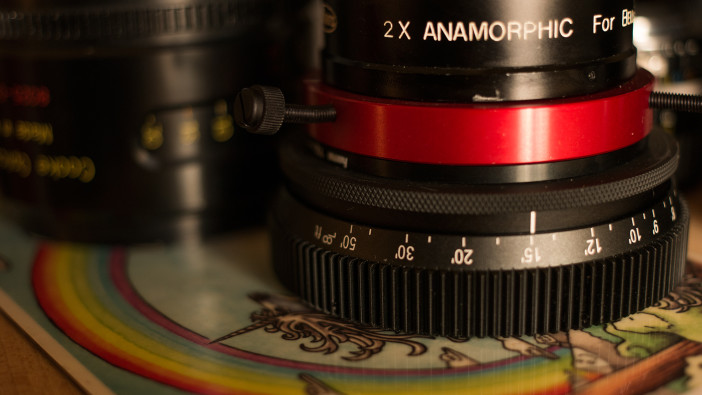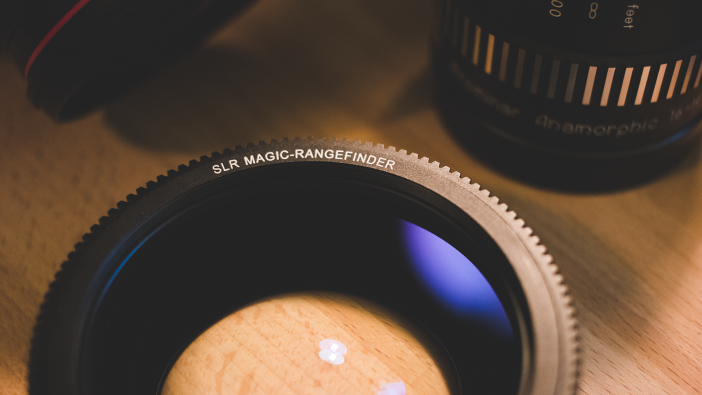https://vimeo.com/134462961

I have been out shooting with the SLR Magic Rangefinder.
Key features:
- It completely takes over focus from any lens
- Solves lens breathing (reduces to such low level it isn’t noticeable)
- Adds cinema standard 240 degrees focus ring with FF gearing and hard stops
- Reduces minimum focus distance of all anamorphic lenses to 1m (even long-throw projector lenses)
For those who shoot anamorphic especially this will be music to your ears. These shooters will also be familiar with diopters, which are used to correct aberrations and achieve very close focus. Effectively the SLR Magic Rangefinder is a variable diopter and thus a rather brilliant concept as it is capable of taking over focus from the taking lens entirely from 1m (3ft 6″) to infinity.
Music featured in the video by Singer / songwriter Anne Haight
My video features music from my close friend, Berlin based singer / song writer Anne Haight! Anne and I have worked together on music videos and lyrics in our time out from the daily grind of camera blogging and surviving as a musician in the era of Spotify and YouTube. We are looking a genuine talent here, Anne’s voice is hauntingly beautiful, her songwriting has a melancholy feel but somehow feels so uplifting and hopeful. You will be hearing more of Anne’s music on EOSHD in the weeks to come as well as a music video we shot using the Sony A7S and LOMO anamorphic.
*****
There’s a deal-breaker when it comes to all the “affordable but beautiful” vintage anamorphic lenses – they are pretty much unusable in terms of focus.
And when it comes to photography lenses these breath heavily for video compared to a cinema lens.
What is lens breathing?
Commonly explained in the film inductry with this animated GIF of a cat, lens breathing is where the field of view of your frame changes as you focus. This has the affect of distorting, squeezing or squashing the frame as you move focus from one position to another.
Cinema lenses are designed to minimise this but photographic lenses aren’t, because obviously with a still image you don’t notice the slight change in FOV from one shot to the next. Focus breathing is most noticeable with a deep depth of field. On the Samyang 35mm F1.4 at F5.6 for example is where you might notice a big difference to a more expensive real cinema lens when racking focus during a shot and it’s not pretty. At very wide apertures like F1.4 with a shallow depth of field, the pervasive bokeh and out of focus parts of the frame help hide the FOV shift more but it is still changing a lot.
Because the focus on the prime lens (and the anamorphic adapter too) is set to infinity when the SLR Magic Rangefinder is attached, your lens focus mechanism is no longer used at all. All the focussing is done on the SLR magic Rangefinder which is tuned to reduce focus breathing to an absolute minimum, similar to a professional cinema lens.
This is an advantage which counts in its favour not just for anamorphic lenses like my Kowa, but with Canon & Nikon lenses as well and a host of photographic stuff (and nice to get rid of that scalloped focus ring on the Voigtlander Noktons too!).
http://vimeo.com/134696189
How it works
Now the SLR Magic Rangefinder is a rather revolutionary tool in my view and very very simple… It is not just for anamorphic lenses, you can use it on anything. You just set the prime lens to infinity and focus using the SLR Magic Rangefinder. This adds a cinema-spec manual focus ring to the front of your rig. You use that to focus instead of the crappy one on your Canon lens or anamorphic! Simple as that!
What it does is borderline magician stuff – Cures focus breathing! Gives Nikon lenses a focus ring that turns the right way! Gives all lenses a common 240 degree travel and teeth for a follow focus gear. Gives Canon lenses hard stops… How else would this ever be possible, let alone with just one accessory?
As a bonus it is also very light, slim and screws on like a filter ring. Setup is dead simple.
One very important thing to note after attaching it for the first time though is that infinity might vary on your lens if your mount adapter knocks it off slightly. Sometimes it is necessary to focus the prime lens close to the infinity witness mark on the barrel and not right on it. First, before shooting simply point the camera at the horizon and find out. Put the SLR Magic Rangefinder to infinity, focus the prime to infinity – is it sharp? If not, adjust the prime to close to infinity until it is sharp. Once you’ve done that the final step is to then tape off the focus ring on the prime lens so it doesn’t move from now on and focus using the better one on the SLR Magic Rangefinder instead.
http://vimeo.com/134694348
Curse of the affordable anamorphic
For so long a key part of cinema DNA, the anamorphic look of course gives you that wider aspect ratio without chopping off the top and bottom of your sensor and reducing vertical resolution. It gives you the optical characteristics of a film like Blade Runner, which was shot anamorphic. Horizontal streak flares, waterfall stretched bokeh and other magical properties can be yours and my god is it beautiful.
The affordable anamorphic lenses are cheap because they have dual focussing mechanisms where the prime has to go to the same mark as the anamorphic otherwise the image is completely blurry. PITA! This is only remotely tolerable if you have taped marks on the floor down to an accuracy of a milimetre, your actor is a cyborg and you don’t plan to rack focus AT ALL for 1000 takes on the trot! However if you don’t have a tape measure between your lens and your subject and just want to shoot a real scene like in my video above it is maddening. Focus racking was impossible with the Kowa 16H as well as quick shot setup for run & gun and the minimum focus distances was 2m! That was a tragedy as the Kowa 16H/8Z was always a stunningly beautiful piece of glass in terms of the images… just hamstrung.
Now the legendary Iscorama was different, it worked like the SLR Magic Rangefinder. Single focus ring at front, prime set to infinity and you are set to go. Can rack focus just fine, although it wasn’t particularly smooth and many of them have stiffened up in their old age.
To give you an idea of just how good the Kowa is optically though, when I first tried the zebra striped 16H (and the Bell & Howell 8Z version) versus the famous Iscorama it did in fact have a slight advantage in sharpness and a rather significant advantage in terms of vignetting. The corners go dark at a narrower field of view on the $3000 Iscorama compared to the Kowa which could go wider by about 15mm. Needless to say I’m glad I kept hold of my 16H (and 8Z).
Although the advantages of the SLR Magic Rangefinder outside of just anamorphic are clear, my initial focus (as in attention!) is with the anamorphic lenses for now, because these are so dreadfully challenged to begin with! Even the Iscorama is not great for focus. It is stiff and dried up like a sex starved Pinocchio. Long ago I gave Van Diemen Optics in the UK £1800 to put some life back in and give it a cinema lens spec focus ring. 10 months later I’m still waiting for them to resuscitate it.
The SLR Magic Rangefinder solves all the focus issues I have with my Iscorama and other anamorphic lenses entirely for $599. Not a bad deal if you ask me! If I could ask for my £1800 from Van Diemen I probably would!! Short on having the Kowa rehoused… no… completely rebuilt and re-engineered, there was no way that one was coming back to life!! If this lens was Pinocchio it wouldn’t just be a bit stiff, he’d be dead!
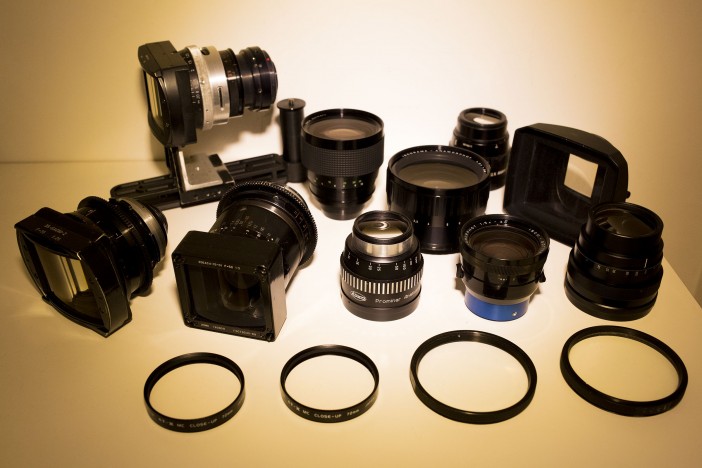
Facts
Before I continue with the anamorphic talk first a few more facts about the Rangefinder.
Andrew at SLR Magic says there will be 2 versions, one without witness marks and one with. The one with witness marks (100% accurate for marks on the floor, etc.) is $599 but the one without will be cheaper. The reason is that the witness marks require more time and calibration at the factory leading to a higher price. However the company believes there are quite a few shooters who don’t have a focus pull assistant and may not need the witness marks at all if they pull focus by eye off a monitor or EVF. Therefore there will be a lower price of $299 for the version without witness marks. Although I consider the $599 version a bargain as it is, it is nice to have a choice and to make it as accessible as possible to everyone.
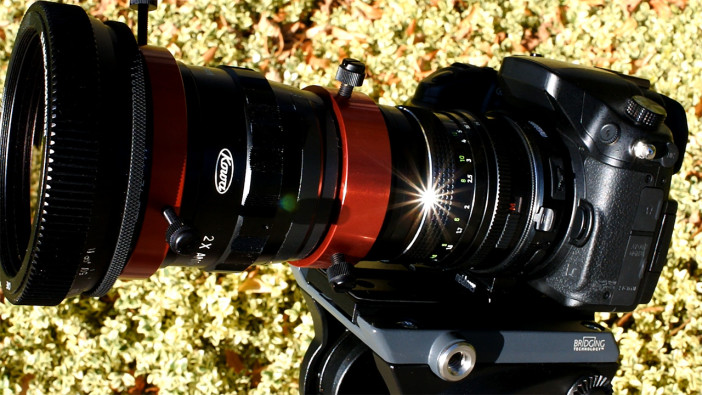
What is more the premium one with marks is getting a promotional price if bought from B&H, Adorama or Vid-Atlantic upon release – just $399 rather than $599.
The $299 version without witness marks will be available a bit later, in Q4 2016.
Rear thread size is 77mm and it does have a front thread of 82mm. However the front thread rotates due to the design so you will have to use an ND filter in-camera or a fixed-strength ND (screwed on or in matte box) and not a variable ND. Personally I prefer the standard NDs any way as they do not change the look of reflective surfaces (cars, water, etc.) and don’t vignette as much at the corners (especially on a large 82mm piece of glass like the Rangefinder is).
The SLR Magic Rangefinder is designed to be used with their own Anamorphot range of anamorphic lenses too. An introductory offer which pairs the Rangefinder with the 2x Anamorphot will be available at B&H, Adorama and Vid-Atlantic for $1599. We’ll take a look at that combo in the next few articles.
Affordable anamorphic
The $599 focus adapter catapults my $150 Kowa it into the same league as the $3000 Iscorama for a fraction of the price and has caused some excitement on the EOSHD forums as well. Many people own dual-focus anamorphic lenses and would love to gain more practical focussing. Iscoramas regularly go for more than $3000 at the moment and are getting rarer. It was beginning to upset people! If you break one, that’s probably going to be it! A Kowa is a bit more dispensable so you feel more relaxed actually using one. The feel of the focus ring on the SLR Magic Rangefinder I found superb. Much, much smoother than my Iscorama, focusses closer than my Iscorama and does so more quickly with less resistance and more evenly with a follow focus. An Iscorama is still utterly magical but the benefit it gave you for $3000 used to be unique vs the Kowa.
Since the SLR Magic Rangefinder is a variable diopter, it reduces the need for you to just say to Nicole Kidman a moment in the middle of take 16 “HANG ON! Stop! Need to screw a piece of glass to the anamorphic Mr Kubrick! She’s gone out of focus!”
Seb Farges has also been shooting with the SLR Magic Rangefinder with his beautifully eccentric anamorphic lens 🙂 Check his footage out below…
Size and handling
Size. I am huge fan of keeping things small and simple. Although the SLR Magic Rangefinder has quite a large 82mm front thread, front-to-back it is hardly much larger than a normal diopter…really tiny like a filter. The larger diameter is necessary for some very good reasons. The large focus ring is useful – more accurate focus with a follow focus. For reference, witness the diameter of the focus ring on the Cooke S4i Mini (below)…
And the large diameter of the glass makes it compatible with a wider range of lenses without vignetting (many popular DSLR lenses have 77mm front glass) and sharper in the corners. On an old Nikon AiS lens with 52mm thread, it does look a lot bigger but it remains comfortable to use.
Downsides
Downsides, or rather, is there such a thing as a free lunch? The SLR Magic Rangefinder does have a softening of the image going on and does introduce C/A. Usually a diopter sharpens up a lens and corrects a few aberrations (as was the case with the Tokina +0.4 double achromat on the Iscorama for example). This one doesn’t but it is a not-too-surprising trade off for the convenience of a variable focus distance diopter isn’t it?
Especially at very fast apertures like F1.4 it does soften up and there can be a lot of blue fringing around high contrast backlit subjects where light wraps around the edges of leaves on a tree for example – but this mainly occurs not to the subject which is in focus, rather outlines which are in the background out of focus. On my anamorphic lenses the sharpness at F1.4 is a moot point though and here’s why. 99% of the time anamorphic is not usable at such fast apertures anyway. They are much softer than the prime too. Nobody wants a soft lens exactly – but I’m willing to trade in extreme sharpness actually and not just to gain the overall character of anamorphic, but because a bit of softness (not too much) takes the harsh edge off digital and 4K, more flattering for faces and skin! Sometimes the Sigma 50mm F1.4 ART or Zeiss Otus is too much… i.e. I want to see the face, not the makeup.
With the Rangefinder attached to my Iscorama or Kowa I just have to stop down one or two stops more than usually to get the same sharpness I would achieve without it. For the regular aspherical lenses, I’ll be taking a closer look at the performance with this in the next article.
Conclusion
For me the SLR Magic Rangefinder is a focus tool and to achieve an accurate focus pull you really need to stop down. That makes the softer image at fast apertures with the SLR Magic Rangefinder more and more of a moot point the more I think about it. At a more manageable F2.8 or F4 for a focus pull or better still F5.6 and you have something that is both sharp AND actually easy to rack focus with. Isn’t this the whole point of the SLR Magic Rangefinder? Many Hollywood productions for example are shot at T5.6 on Cookes to give the focus puller a chance. The SLR Magic Rangefinder should be thought of as a F4 or F5.6 lens as well. It is all about getting that perfect focus pull, with a sharp picture and not a silly thin focus plain dancing around the actor’s head with his eyes in focus one second and ears the next. The SLR Magic Rangefinder introduces some chromatic aberration as well – another reason for avoiding F1.4 with it – but this is quite well under control once you stop down past F4 and I have found it occurs mainly at the very close focus distances.
Speaking of which – although 1m isn’t particularly close for, say, a 35mm prime lens it is standard for an 85mm and almost all Leica M lenses. In fact 1m MFT is genuinely nice for an anamorphic, especially one designed to throw an image at a wall rather than take one as is the case with the affordable ones. Without the SLR Magic Rangefinder for example the Kowa anamorphic and indeed an Iscorama achieves a mighty 2m close focus distance for your $3000 🙂 The SLR Magic Rangefinder halves that and gets it well into the normal usable range… impressive.
As well as pleasing Nicole then, since you can put your diopters away most of the time, first and foremost the SLR Magic Rangefinder pleases me… With the video at the summit of the page never did I had such fun and convenience on an anamorphic shoot.
Until now it was a case of seeing a great shot and realising “oh I can’t get close enough” or “oh it has gone because I spent 10 minutes fiddling with the focus mechanism and screwing off the diopter to get back to infinity again” or “this would be so much nicer as a focus rack but oh dear my cat now looks squashy” or “sod this I am going home, this is a pain, I am never shooting anamorphic again!!” Nope, it was blissfully easy.
Thank you SLR Magic for making anamorphic fun again.




